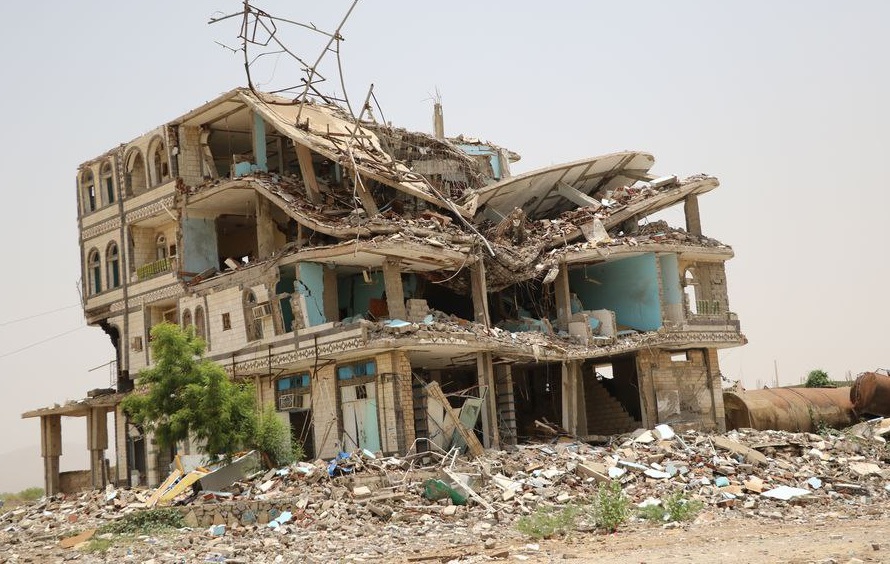
The American-Saudi aggression on Hajjah: four thousand and 956 martyrs and wounded, including one thousand and forty-nine children and 814 women
Published on March 27, 2024
Ansarollah website – Hajjah
Today, Hajjah governorate organized an event on National Resilience Day and a conference to review the most prominent crimes of aggression during nine years of aggression.
At the event and conference in the presence of the governor’s undersecretaries, Muhammad al-Qaisi and Mr. Taha al-Hamzi, the governor’s undersecretary, Muhammad al-Qadi, pointed out the war crimes that the governorate had been subjected to for nine years, which were met with legendary steadfastness.
He stated that Yemen emerged from under the rubble stronger than it was and took the lead in adopting the Palestinian cause and standing with the nation’s issues, most notably Palestine.
In turn, the governorate’s deputy for the affairs of the city’s directorates, Ahmed Al-Akhfash, pointed out that commemorating the National Day of Resilience in the Face of Aggression is a mobilization station to draw inspiration from the sacrifices and heroism of the martyrs in the fields of warfare and to renew the pledge to follow their path.
He stressed the importance of continuing to be steadfast in confronting the allies of the tyrant and the oppressors of the era, and supplying the fronts with convoys of men and giving, and paying attention to the families of the martyrs, the missing, and the wounded.
While the director of the human rights office in the governorate, Abdullah Al-Mahmari, indicated that the governorate was subjected to the most horrific metaphors that were described as full-fledged crimes since the first raids on the governorate, which began with the bombing of displacement tents crowded with displaced people in Al-Mazraq in Haradh District, with internationally banned cluster bombs, and this crime resulted in the martyrdom of 45 displaced people and 187 others were injured.
He pointed out that the aggression resulted in a violation of the United Nations Charter, human rights, and the Universal Declaration of Human Rights, starting with the violation of Yemen’s sovereignty on March 26, 2015, and the subsequent attack on the sovereignty of an independent state and an active member of the United Nations system.
The Director of the Human Rights Office stated that the aggression committed crimes and serious violations in the governorate and destroyed the infrastructure in all its sectors.
He explained that the 35 massacres of the aggression were horrific, starting from Al-Mazraq camps and Bani Qais Oran camp in Aflah Al-Yemen, passing through Dhahr Abu Tir and Ahem triangle, and ending with Beit Majli in Washha district, which resulted in the fall of four thousand and 956 martyrs and wounded, including 1,49 children and 814 women.
He pointed to the epidemics and diseases caused by the aggression’s bombs and missiles that killed many families, as well as the repercussions of the aggression that caused a humanitarian disaster.
Al-Mahmari explained that the governorate’s infrastructure, services and economics were subjected to systematic destruction, as the aggression targeted 190 roads and bridges, 17 electrical stations and generators, 23 networks and communication stations, 139 government facilities, 120 health facilities, 82 tanks and water networks, in addition to an airport and port.
He pointed out that the aggression targeted 127 schools and institutes, 32 mosques, 411 agricultural fields, seven sports facilities, and 168 tourist facilities in Haradh, Midi, and Hiran, more than half of which are under construction, five university facilities, 18 archaeological sites, seven islands, and two media facilities.
He stated that the aggression targeted, in the economic sector, 596 commercial facilities, 54 poultry and livestock farms, 41 gas stations, 1,49 agricultural equipment, 57 fishing boats, 2,000, 32 food stores, 41 markets, 212 means of transportation, and 30 fuel tankers.
The event and conference included a poem by the poet Ezz El-Din Jahaf in the presence of executive office directors and social figures.
